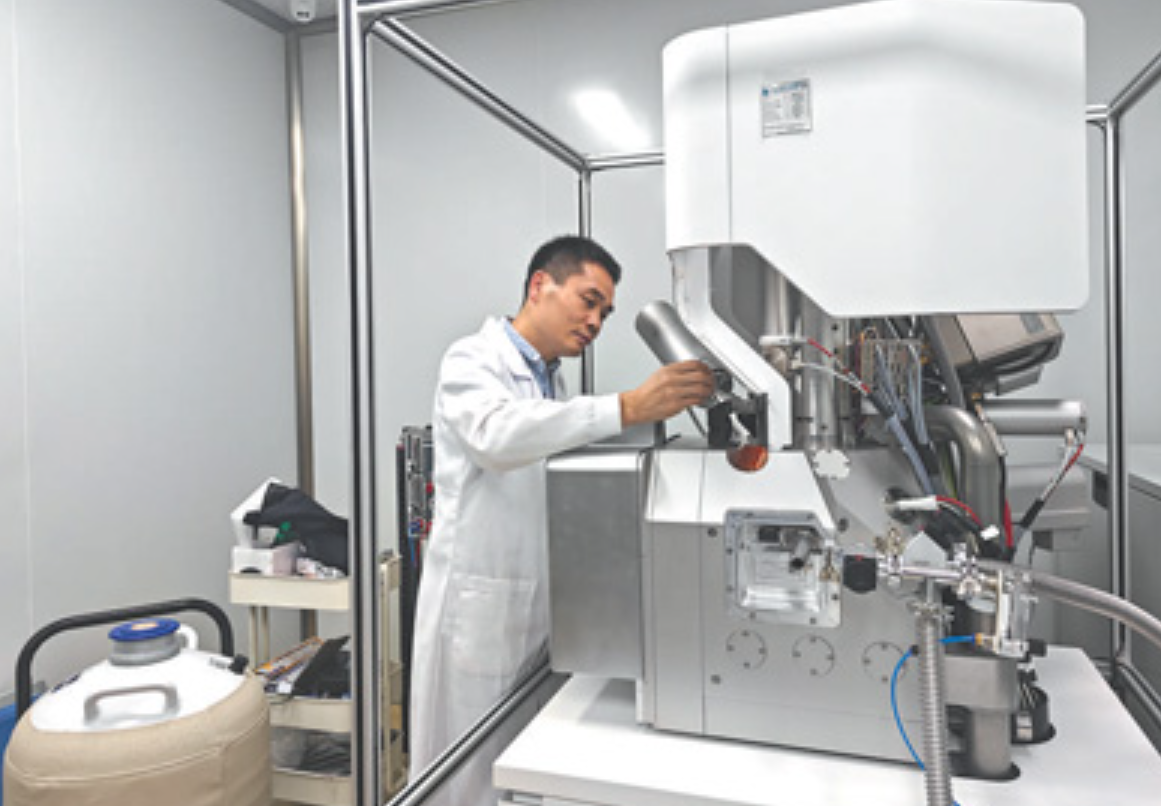
A human hair, which is about the limit of what can be seen with the naked eye, is about 100 microns in diameter, a cell is 1/10 the size of a human hair, and a nucleus is only a few microns. However, this small cell nucleus carries a huge amount of high-value genetic information.
To study the fine structure of cells and improve the understanding of life, it is necessary to go deep into the very micro scale.
"From population ecology to living individuals, organs, tissues, cells, to biomacromolecules, and even the atomic details in biomacromolecules, life sciences involve multi-scale studies from macro to micro."
Gao Pu, a researcher at the Institute of Biophysics of the Chinese Academy of Sciences and research leader of the Key Laboratory of Biological macromolecules, said that as an important frontier of contemporary life sciences, biological macromolecules are a typical field of extremely microscopic research.
How do scientists do research at the very microscopic scale? How to grasp the research trend of extreme micro science? The reporter conducted an interview.
With the help of advanced precision observation technology, "see" cells from the molecular scale
Entering the key Laboratory of biological macromolecules, Ji Wei is guiding the students to debug the photoelectric correlation microscope. Not long ago, the researcher of the Institute of Biophysics of the Chinese Academy of Sciences and the research leader of the Key Laboratory of Biological macromolecules led a team to develop a new observation method based on photoelectric correlation microscopy.
"To study biological macromolecules, the first thing is to 'see' it." Ji Wei told reporters that the assembly structure of biological macromolecules such as nucleic acids and proteins is complex and precise, and the clearer they are observed, the deeper the mystery of life can be understood.
In the 17th century, Dutch scientists observed single-celled organisms for the first time with a self-made microscope, opening the door to microbiology. For about 300 years, the optical microscope continued to develop, but the resolution was limited by diffraction, and it was difficult to break through after reaching a few hundred nanometers.
At the beginning of the 21st century, with the emergence of super-resolution fluorescence microscopy and cryo-electron microscopy, scientists were able to observe subcellular structures at the scale of tens of nanometers to a few tenths of nanometers, greatly expanding the cognitive vision of life science.
With the deepening of the exploration of microscopic structures, scientists continue to improve observation techniques and challenge the limits of "micro" microscopy.
In front of the cell structure displayed on the computer screen, Ji Wei introduced: In order to "see" the fine structure in the clear cell, scientists have to observe specific molecular states.
However, cryo-electron microscopy electron beams can only image biological samples of about 200 nanometers, and cells several microns thick need to be thinned to observe, but this thinning is random and cannot ensure that the target molecules remain in the slice.
In order to achieve targeted cell thinning, the Jiwei team developed a cryofluorescence navigation thinning technology, which is equivalent to installing a "navigation positioning system" for the frozen double-beam electron microscopy, which can effectively achieve target-oriented thinning.
Focusing on the research frontier of biological macromolecules, the Key Laboratory of biological macromolecules mainly focuses on three aspects: precise observation technology of biological macromolecules, precise assembly principle of biological macromolecules, and precise regulation and design of biological macromolecules.
"For biological macromolecules, these three aspects of research correspond to observing it, understanding it, and using it, which are logically closely related and mutually reinforcing." Gao Pu said.
Ji Wei mainly develops the precision observation technology of biological macromolecules, and Gao Pu mainly studies the precise assembly principle of biological macromolecules. "Biomacromolecules and complexes are the agents of all life, and when these molecular machines go wrong, they often lead to disease."Gao Pu told reporters that with sophisticated observation technology, scientists can better study the orderly assembly and dynamic regulation of biological macromolecules, understand this process, can help scientists do a good job of biological macromolecules precise regulation design, so as to propose effective coping strategies.
For example, how does the host respond to abnormal nucleic acid signals, and how is this process regulated? With the help of advanced biological macromolecule research methods, Gao Pu led the team to make a series of breakthroughs in this field, which improved people's understanding of the immune response mechanism of nucleic acid. To the very micro depth, in the key laboratory of biological macromolecules, there are many such important achievements.
In recent years, the Key Laboratory of biological macromolecules has produced a number of cutting-edge research results in three directions. In terms of precision observation technology, by breaking through the spatio-temporal resolution of optical and electron microscopy imaging, photoelectric correlation imaging is realized, leading the development of cutting-edge technologies of super-resolution microscopic imaging and biological electron microscopy;
In terms of the precise assembly principle, a series of new assembly regulation principles of biological macromolecules in many important life processes such as photosynthesis, infection immunity and organelle dynamics were revealed. In terms of precision regulatory design, a series of important breakthroughs have been made in the design of new vaccines, the research and development of new drugs, and the design and application of nano-enzymes.
"The study of biomacromolecules is an important means to cultivate and develop new quality productivity." Gao Pu told reporters that as the commanding heights of life medical research, biomacromolecule research is changing the paradigm of drug and vaccine research and development, the future market is huge, and the potential economic value is very high, "whether it is leading the scientific frontier, or providing the technical basis for the development of drugs and innovative vaccines, biomacromolecule research is a key area that we need to pay attention to."

